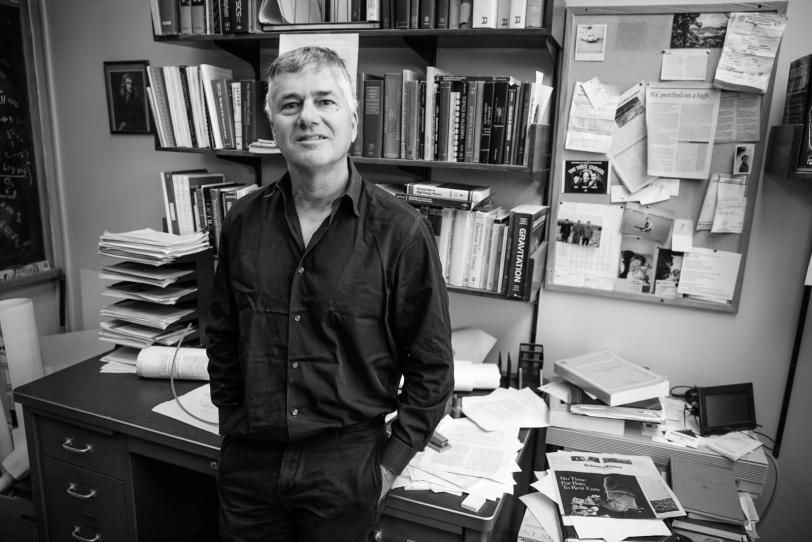SLAC’s Peter Rowson Named American Physical Society Fellow
Honor Recognizes a Long History of Accomplishment that Began at the SLAC Linear Collider
SLAC staff physicist Peter Rowson has been elected a fellow of the American Physical Society, the largest physics association in the world. APS confers this distinction on a small percentage of the society’s membership; it is especially significant because it is a peer-nominated honor.
Rowson currently works on the Enriched Xenon Observatory experiment, which is searching for an extremely rare type of particle decay that, if found, would prove that neutrinos are their own antiparticles.
However, his election as an APS fellow recognizes a long history of accomplishment that began more than two decades ago at the SLAC Linear Collider (SLC). The SLC was being used to produce Z bosons, and the results of its particle collisions were recorded by a detector called SLD. Rowson co-led a group that used the detector to perform a precise test of the Standard Model of particle physics by measuring a property called ALR, the left-right polarization of asymmetry in Z boson production. These measurements provided evidence that within the context of the Standard Model, the then-unobserved Higgs boson, which was thought to give subatomic particles their mass, should itself have a mass of less than 133 GeV.
Shortly thereafter, searches for the Higgs at the Large Electron-Positron Collider (LEP) at CERN, the European particle physics laboratory, determined that the mass of the elusive particle must be more than about 114 GeV. In 2012, when experiments at CERN’s Large Hadron Collider (LHC) finally did observe the Higgs, its mass was determined to be 125 GeV, a result nicely consistent with ALR and with the results of many other so-called "electroweak precision measurements" done at SLAC, CERN and Fermi National Accelerator Laboratory.
“Back in those days, the challenge was getting this new electron-positron collider and the polarization of the electrons to work,” Rowson said. “The polarization of the beam allowed us to compete effectively with our counterparts who were operating a different type of collider, LEP, at CERN.”
Rowson led the SLD electroweak and polarization groups with Morris Swartz, now at Johns Hopkins University. Other key members responsible for building the apparatus, conducting experiments, analyzing data and writing papers for publication were Bruce Schumm of the University of California, Santa Cruz; Ray Frey of the University of Oregon; Mike Fero, now at TeselaGen Biotechnology; and Mike Woods, now a laser safety officer at SLAC.
Precision measurements require endless details to be checked and double-checked; these included whether the SLC's positron beam might have a small polarization that would bias the ALR measurement. “Calculations showed it should be negligible, but questions persisted and Peter led the effort to measure it directly and put a stringent limit on it,” said Woods. “Peter has a quick wit and a great sense of humor, which were especially appreciated when working long days.”
Prior to joining SLAC in 1996, Rowson was an associate professor at Columbia University, where he traveled back and forth to work on the SLD experiment. He holds a bachelor’s degree in physics from Yale University and a PhD in physics from the University of California, Berkeley.
Contact
For questions or comments, contact the SLAC Office of Communications at communications@slac.stanford.edu.
SLAC is a multi-program laboratory exploring frontier questions in photon science, astrophysics, particle physics and accelerator research. Located in Menlo Park, Calif., SLAC is operated by Stanford University for the U.S. Department of Energy's Office of Science.
SLAC National Accelerator Laboratory is supported by the Office of Science of the U.S. Department of Energy. The Office of Science is the single largest supporter of basic research in the physical sciences in the United States, and is working to address some of the most pressing challenges of our time. For more information, please visit science.energy.gov.






